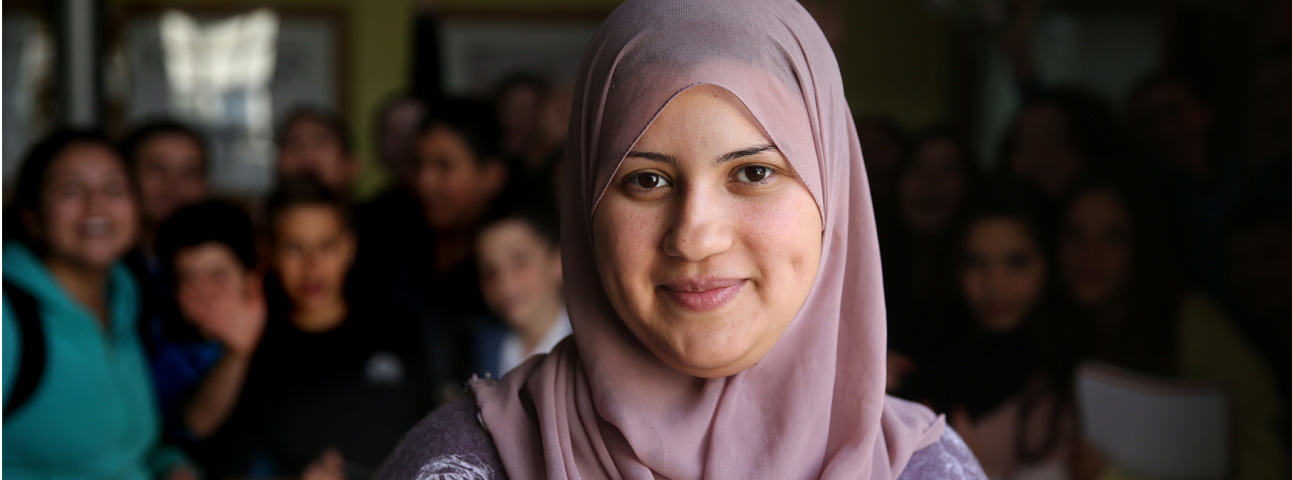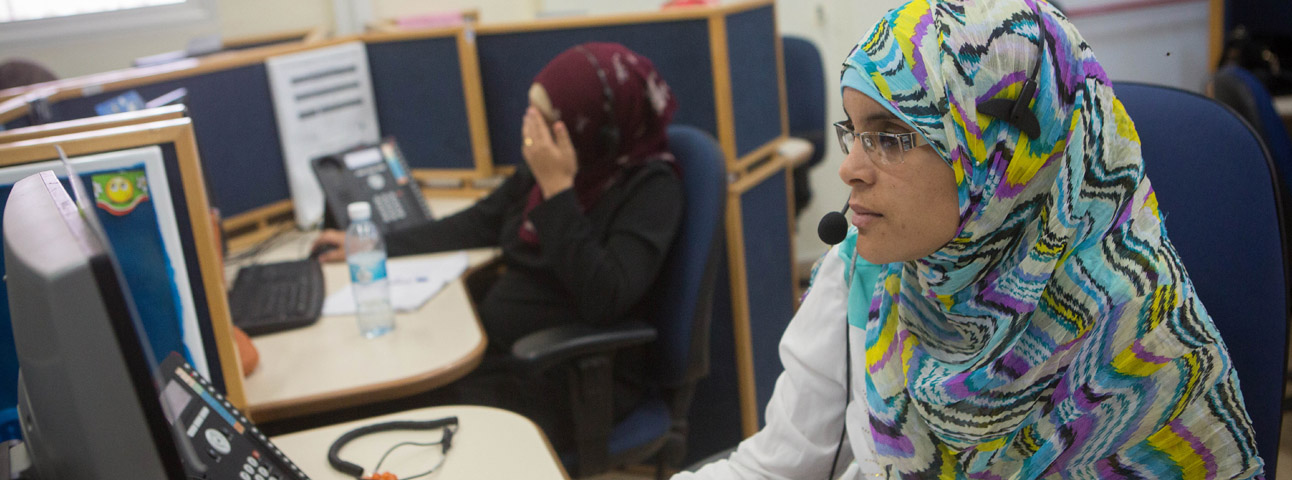For Arab Women in Israel, It's Just Not Working
Arab women - around 10% of the total population of Israel - barely participate in the workforce, far below the employment rate of Arab or even ultra-Orthodox men. Why?

Israel’s unemployment rate recently hit a new low: it's now less than 4%. But this encouraging figure comes with a caveat: it doesn’t include those who are not "actively seeking employment," a group that encompasses two-thirds of Arab women of employment age.
Understanding why the rates of participation in the workforce are so dramatically low among Arab women, compared to Arab men, or even to ultra-Orthodox Jewish men, requires an appreciation of the many barriers to employment they are forced to contend with.
First, Arab women suffer from a difficult starting point when it comes to employment (as do Arab men), due to budgetary discrimination and the resulting poor quality of education in Israel's Arab society. Learning materials in Arab schools are not well suited to the labor market of the 21st century. Students at teaching colleges in Arab society are also not of a particularly high quality, and the standard of training in those colleges is largely poor.
Studies have also indicated a problem in the mental preparation of Arab students regarding the prospect of academic studies in Israeli universities: leaving home for the Jewish cities, the transition from a traditional environment to a liberal Western culture, language problems, and different behavioral codes are all significant barriers.
They result in most young Arab women taking the easier option of staying within the familiar confines of family and community. The situation is different for Arab men, who are more concerned by fears of social rejection, and lead them to make the compromise of entering vocations that do not make full use of their full abilities.
Thus, most young Arab men work in blue collar professions or in manual labor, which allows them to remain in an environment that is mainly Arab and is non-threatening. However, most of these types of work are not open to Arab women, who consequently end up staying at home.

Changes in the labor market itself have also affected the ability of Arab women to participate. It is now a market that changes rapidly, demanding flexibility and frequent changes of employment, which is much more difficult for women who live far from the country’s main centers of employment.
Today’s labor market also increasingly demands technological skills and the ability to solve complex problems, which require good basic education and academic studies.
To these challenges, we can add the lack of childcare in the Arab society, the relatively young age at which Arab women get married, and conservative social attitudes that restrict Arab women to areas of employment considered "feminine" or "modest."
And thus, we end up with a situation in which Arab women - around 10% of the total population of Israel - barely participate in the workforce.
This situation has to change. That's not only for the sake of the Arab sector and women’s equality, but also to benefit Israel’s GDP and society as a whole.
This is first and foremost a task for the heads of Arab local authorities, who must make education their highest priority.
But it can only happen if the state adopts appropriate budgetary and disbursement policies toward Arab localities, encompassing investment in targeted programs, improving schools and teaching, and strengthening informal education.
In addition to its financial and social value, increasing workforce participation among the Arab minority, particularly Arab women, can reduce violence and improve the wellbeing of Arab citizens.
No less importantly, the presence of more Arab women on campuses and in Jewish towns will also reduce the hostility and alienation between Jews and Arabs in Israel, alleviating a critical tension in Israeli society today, and creating better foundations for a wider peace - which, as always, begins at home.
The article was published in Haaretz.
